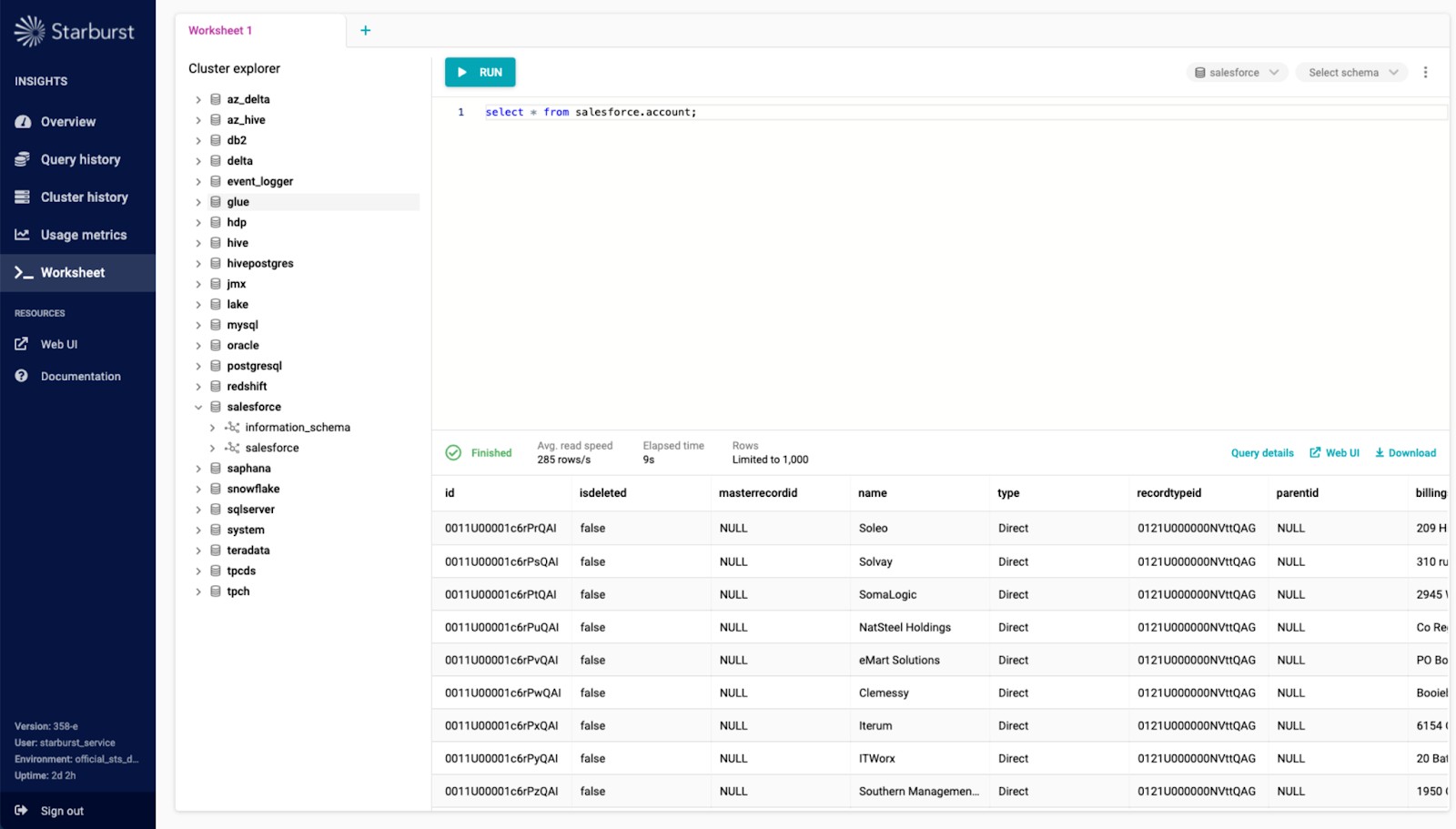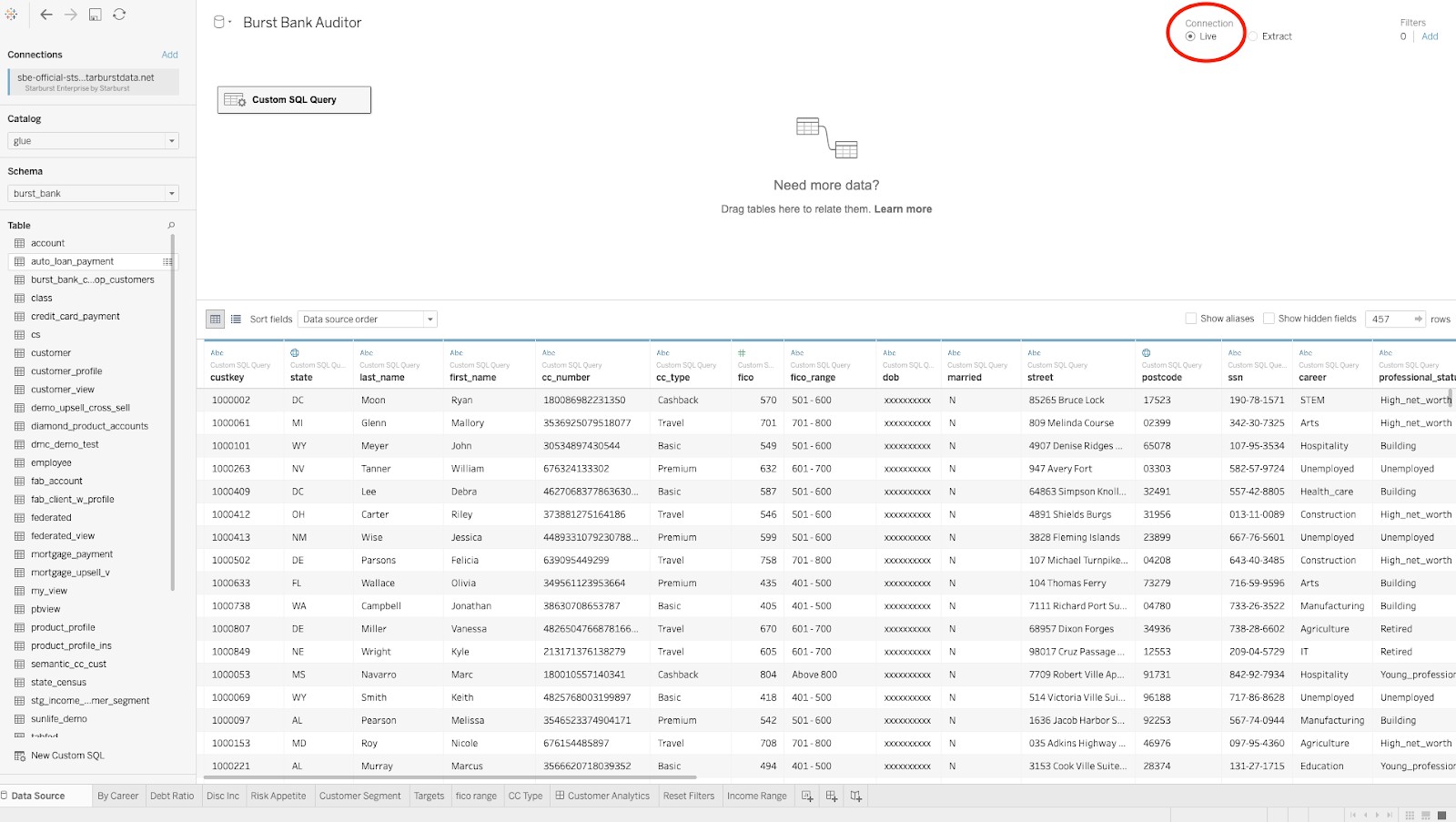Over the past twenty or so years, companies have experienced a Cambrian explosion of where their customer data resides.Cloud and on-premises enterprise applications aim to offer a “single source of truth” more commonly known as a Customer 360 – far from a trivial feat for most IT organizations
Perhaps one of the most successful examples of a SaaS application that enables companies to create a 360-degree view of their customers is Salesforce. In addition to core CRM capabilities, Salesforce has created tremendous value for a company’s various lines of business spanning sales, service, marketing, and more.
Challenges with Customer 360
Enterprise applications are purpose-built to handle operational duties of a business such as managing sales processes, triaging customer service support cases, fulfilling an eCommerce order, and so on. The implementation of a SaaS application – or any other enterprise application for that matter – leaves much to be desired for analytics use cases where the measure of success is how quickly the business’s questions can be answered by data-driven, actionable insights.
“Companies have tons and tons of data, but [success] isn’t about data collection, it’s about data management and insight.” — Prashanth Southekal, Business Analytics Author, Professor, Head of the Data for Business Performance Institute
The business-as-usual approach to enabling analytics often relied on replication into siloed data marts, required brittle Extract-Transform-Load (ETL) processes into on-premises enterprise data warehouses, or more recently ceded control of data to the proprietary storage formats of cloud data warehouse vendors. These approaches, including the need to replicate data solely for analytical use cases, fail to keep pace with the speed of business and ultimately prolong time to insight.
Starburst’s Approach
What if there was a way to quickly draw insights from transactional and historical data without the prerequisite of data movement or ETL?
Starburst’s enterprise-grade platform enables companies to achieve all of that and more!
With 40+ connectors to applications such as Salesforce, ERPs such as SAP S/4 HANA, data warehouses, and data lakes coupled with an MPP engine, Starburst helps data professionals derive insights faster using a familiar language – standard ANSI SQL. Data pros can even tap into operational data from a system like Salesforce and federate or join those tables (sObjects in Salesforce speak) with data from other sources such as a data lake, databases, and data warehouses.

Starburst’s Salesforce connector handles the mapping of ANSI SQL to SOQL (Salesforce Object Query Language) so that data analysts don’t need to hold a Salesforce Certification just so they can access CRM data. For more on connecting to Salesforce from Starburst, check out our documentation on the Salesforce connector: Starburst Salesforce connector — Starburst Enterprise
Connecting to data sources and benefiting from Starburst’s automatic SQL query optimization, known as the Cost Based Optimizer, are just two pieces of a much larger puzzle. Gaining true business intelligence involves layering on a data visualization application such as Tableau. Common patterns of serving data to BI tools involve data integration, ETL/ELT, or more intensive plumbing that ultimately delays your time to insight.
Specific to Tableau, common patterns involve writing (and then maintaining) custom code to use the Web Data Connector only to end up visualizing stale extracts, attempting to write very large payloads to the Hyper API, or waiting for batch ETL/ELT jobs to load a data warehouse (cloud or otherwise).
With the Starburst connector, data consumers in Tableau can create a live connection that serves up real-time data to dashboards and visualizations on large volumes of data with support for hundreds to thousands of concurrent users. Other tools and approaches oftentimes end up relying on stale extracts and reduce the value of the data in the eyes of end-users.


In addition to the live queries, data consumers can federate data from multiple sources without the need for ETL/ELT using just Standard ANSI SQL. Here’s an example of a federated query that yields the above result set:

After Starburst does the heavy lifting of serving your live data, creating visualizations in Tableau is a walk in the park!

Light Up Your Customer 360 with Starburst
The power of Salesforce’s Customer 360 is endless and when coupled with the right approach to analytics, your business will gain superpowers.
Whether your company is:
- Streamlining patient care coordination with social determinants of health leveraging datasets residing in Salesforce Health Cloud, EHRs, and Teradata
- Pinpointing supply chain bottlenecks/inefficiencies with Salesforce Commerce Cloud, SAP S4/HANA, and Oracle databases
- Analyzing data from Salesforce Financial Services Cloud and a petabyte-scale data lake in Hadoop (check out the video below!)
Starburst can drastically reduce the time to insight for your business, reduce technical debt, and unleash the power of the data you have today and will have tomorrow – regardless of where it resides.






